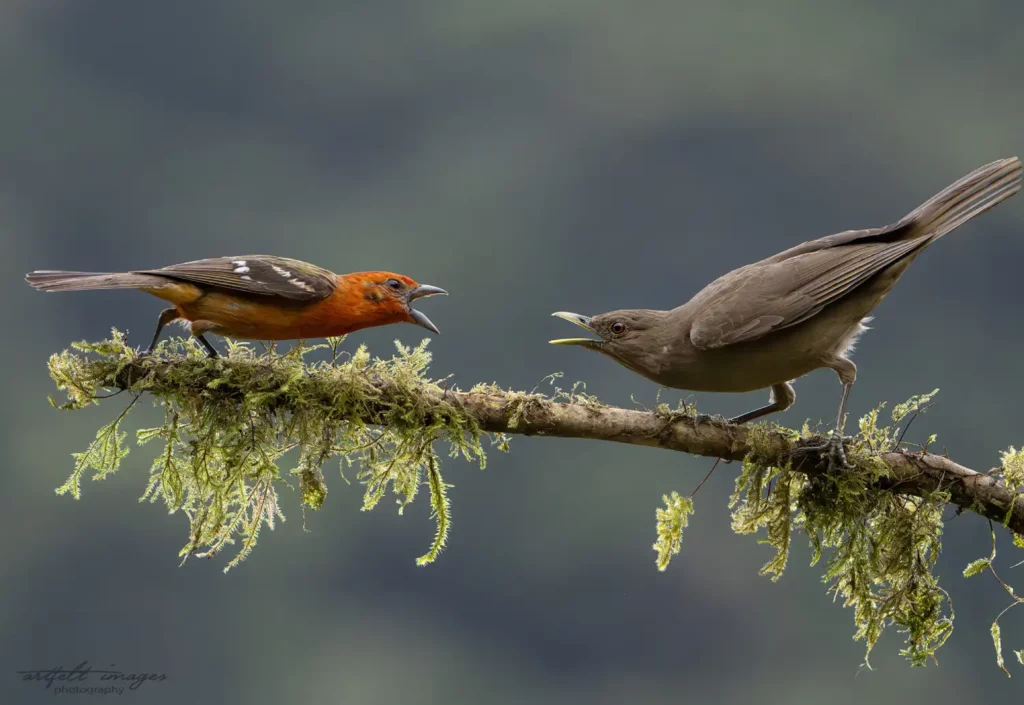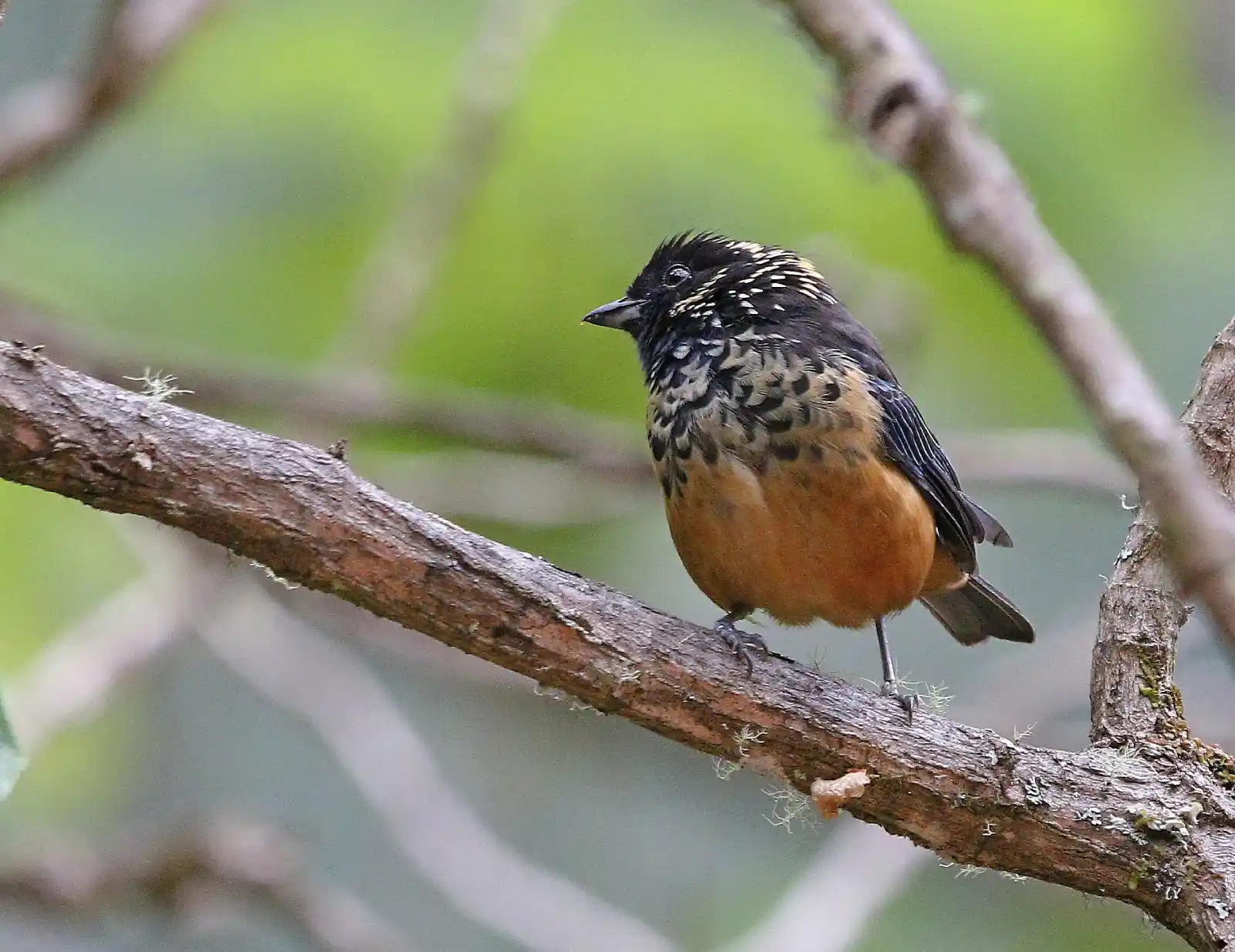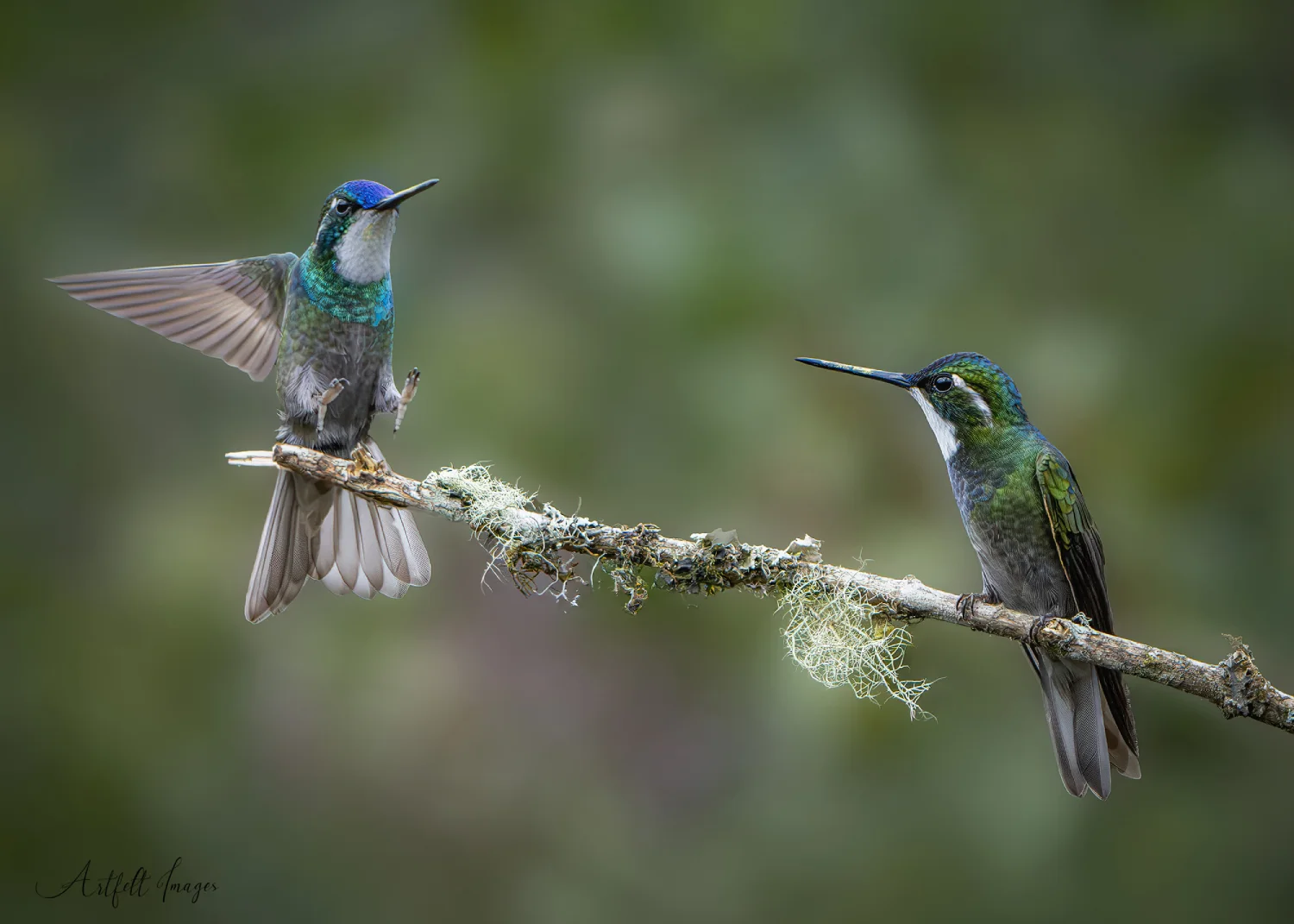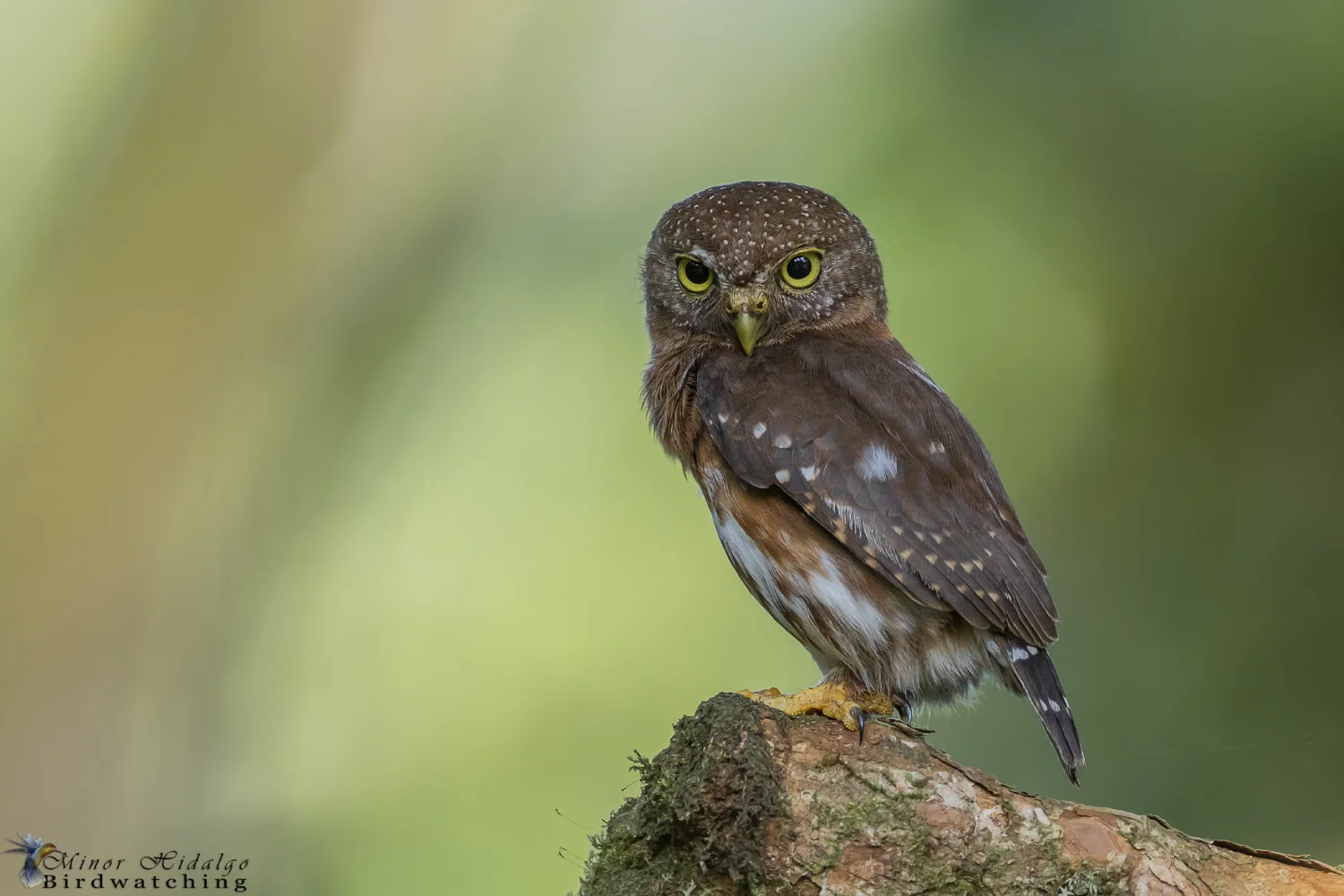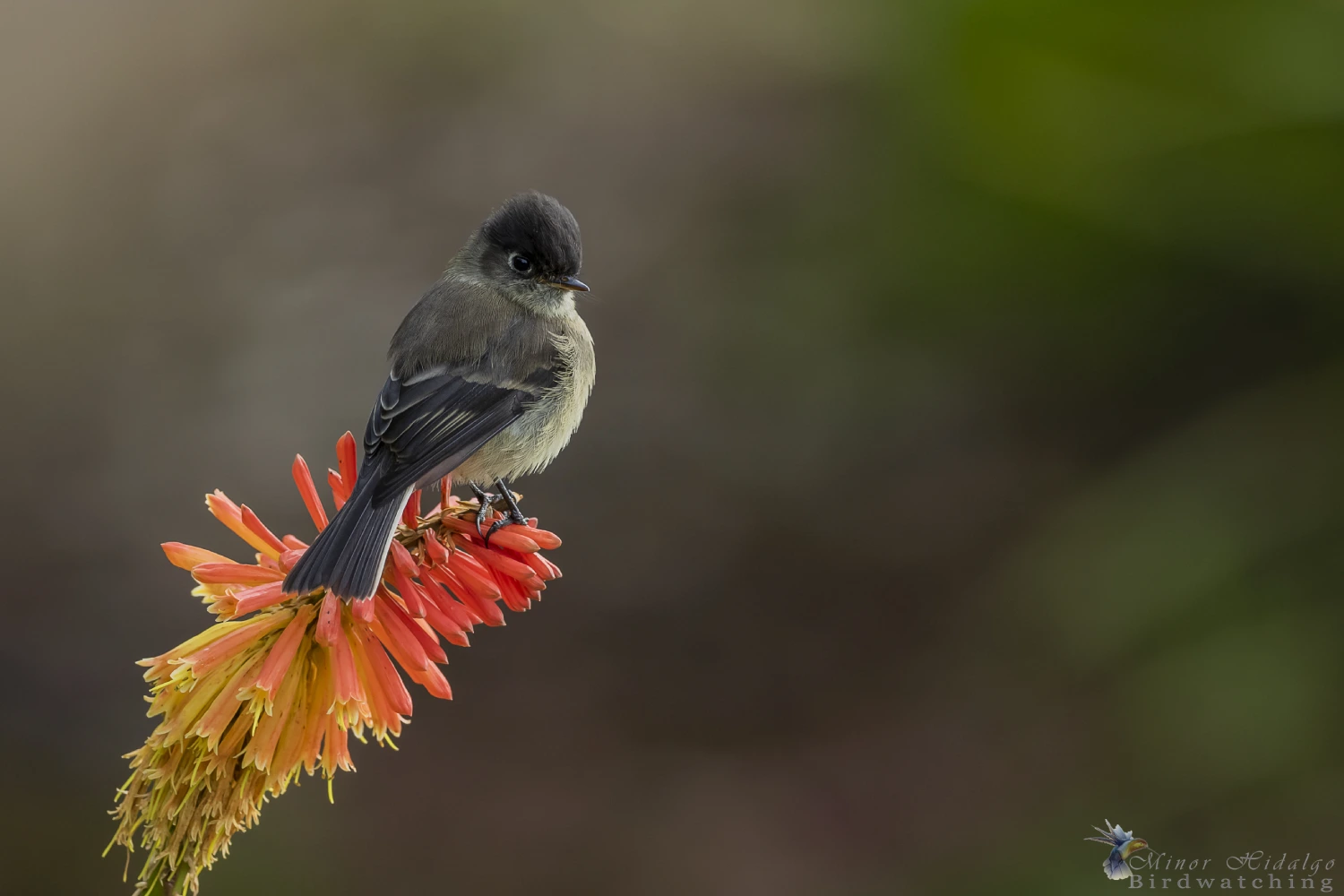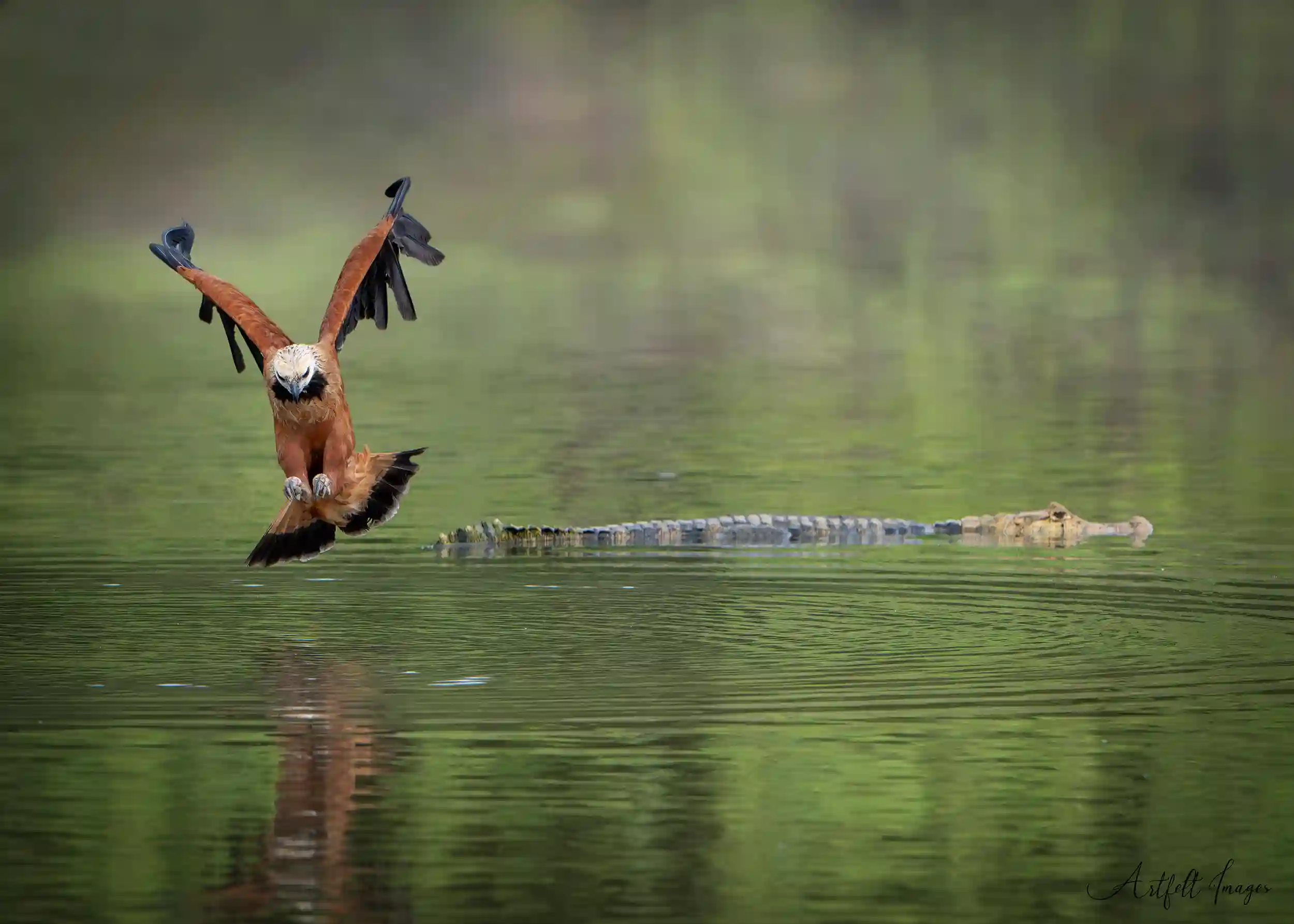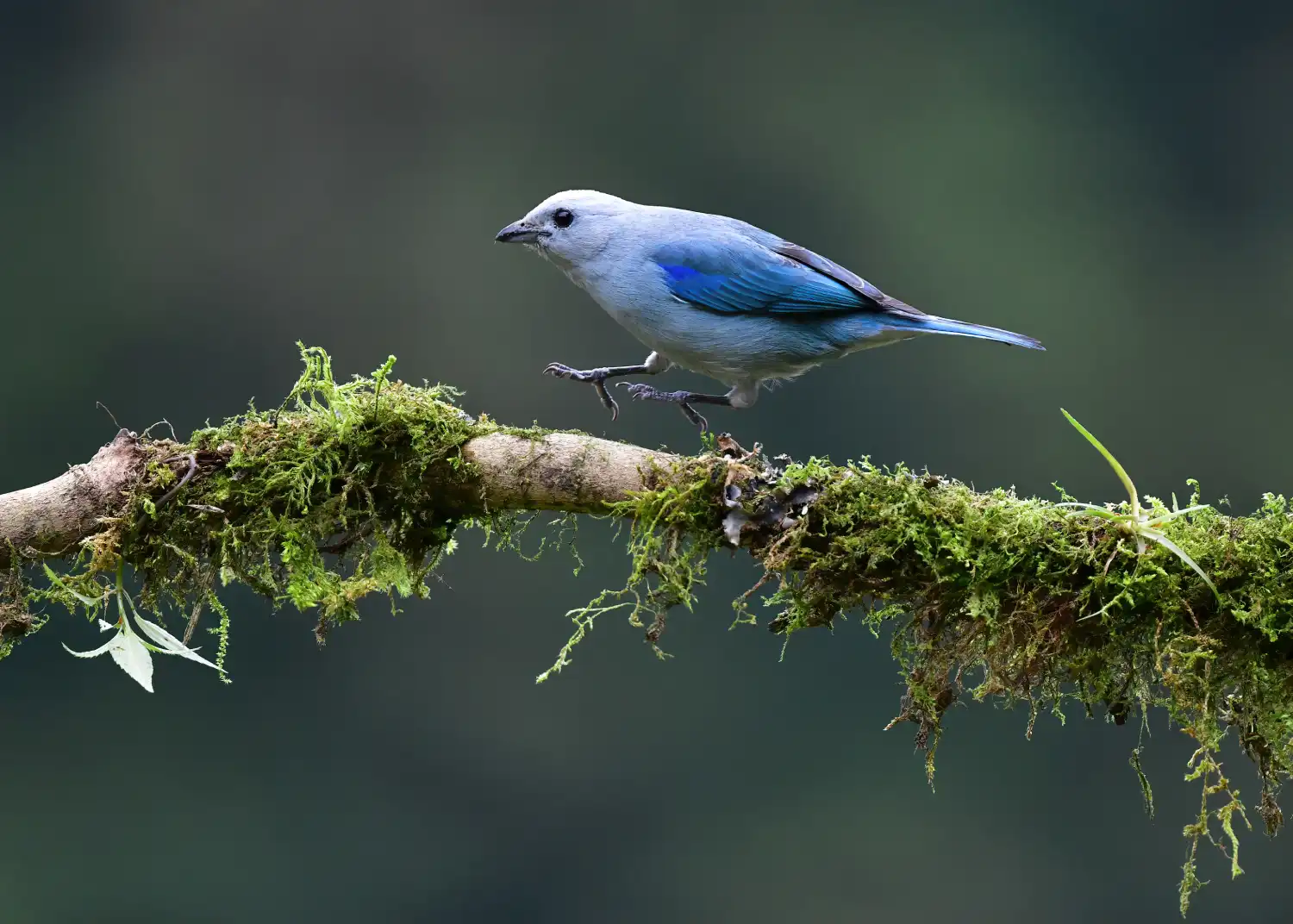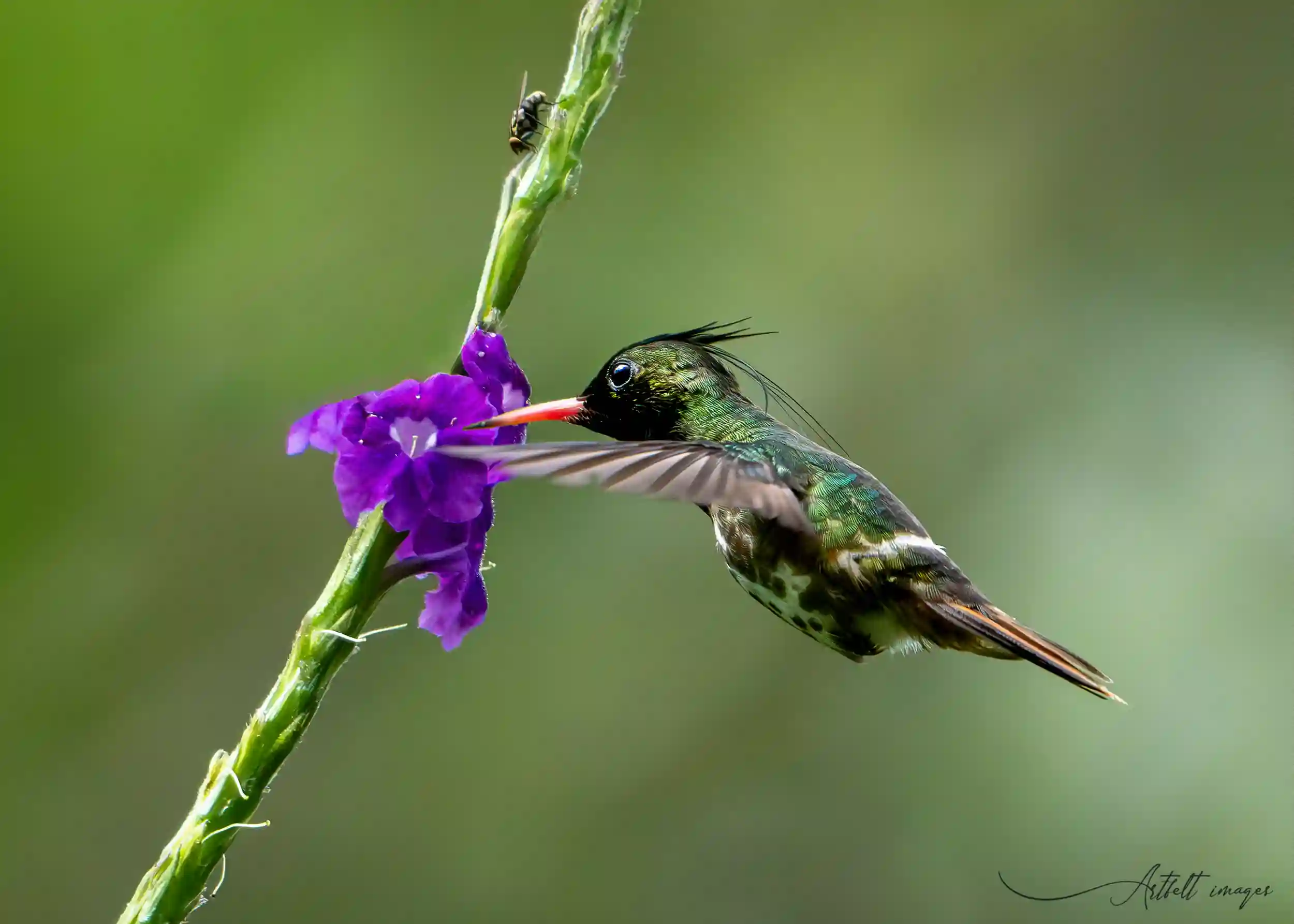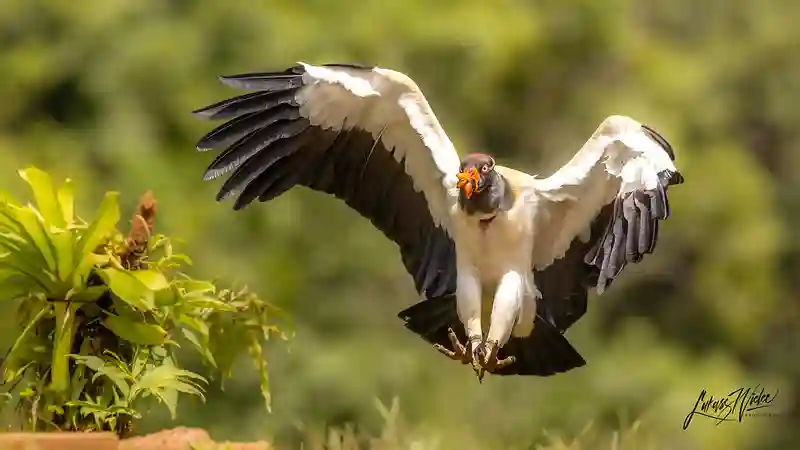Discover Costa Rica’s Extraordinary Bird Photography Opportunities
Costa Rica stands as a premier destination for bird photographers, offering an incredible concentration of species in a compact, accessible country. With over 900 bird species in an area smaller than West Virginia, photographers can capture everything from jewel-like hummingbirds to the mythical Resplendent Quetzal without extensive travel between locations.
What makes Costa Rica special for bird photographers:
- Strategic location between North and South America creates exceptional biodiversity
- Multiple ecosystems within short distances (rainforests, cloud forests, highlands, wetlands)
- Well-developed infrastructure for photographers (hides, platforms, feeders)
- Experienced local guides who understand photography needs
- Year-round bird activity with different seasonal highlights
- Iconic Target Birds: Resplendent Quetzals, Scarlet and Great Green Macaws, toucans, trogons, hummingbirds, and motmots.
- Conservation-focused tourism. Many private reserves and eco-lodges support habitat conservation, which results in more reliable and protected wildlife experiences.
Choose Your Perfect Bird Photography Experience
1. Privately Guided Photography Tours
Our most personalized experience, a privately guided tour offers full flexibility and one-on-one support from a dedicated photography guide, start to finish.
Key Benefits:
- Custom itinerary built around your target species and photo goals
- Flexible daily schedule to chase the best light and activity
- Hands-on instruction in rainforest and bird photography techniques
- Access to private photography sites unavailable to groups
- Specialty photography set ups available in select locations
Perfect for:
- Serious photographers with defined target lists
- Photographers who prefer working at their own pace
- Those seeking to improve their technical skills
- Photographers looking for collaboration with a professional bird photography guide
Sample Experience: Your private guide will greet you at the airport and stay with you throughout the trip, guiding you from the Caribbean lowlands to the cloud forests of the highlands. With expert insight into bird behavior and habitat, they’ll position you for the best chances at iconic shots—like toucans in soft morning light or a Resplendent Quetzal framed in mossy branches. You’ll receive personalized guidance on framing, composition, and adapting to the unique lighting challenges of tropical environments, all at a pace tailored to your style and goals.
2. Small Group Photography Tours (Fixed Dates)
Designed specifically for bird photographers, our small group tours combine expert guidance, carefully scouted locations, and a supportive group dynamic. With fixed departure dates and a maximum of 8 participants, these tours strike a balance between structure, access, and shared photographic opportunities.
Key Benefits:
- Share the experience with like-minded photographers
- More affordable than private tours
- Pre-scouted locations selected for light, access, and species diversity
- Led by a professional bird photography guide
- Guaranteed departures on fixed dates
Perfect for:
- Social photographers who enjoy sharing tips and ideas
- Solo travelers looking for a shared experience
- Those who prefer a structured, guided itinerary
- Photographers seeking a cost-effective way to visit top locations
Sample Experience: With a maximum of 8 participants, your days are structured to maximize photographic opportunities in the best light and conditions. Mornings often begin before sunrise to catch the first activity at feeders or in the field, followed by relaxed mid-day breaks and review time. Afternoons focus on new habitats or returning to productive sites, and occasional evening sessions may target owls or other nocturnal species. Your professional photography guide works alongside a local bird expert to ensure you’re positioned for the best angles and have support with techniques, composition, and gear throughout the day. Expect chances to photograph a wide range of tropical birds—including colorful tanagers, toucans, hummingbirds, and specialty species like the Resplendent Quetzal or King Vulture.
Independent Tours with Local Guides
Our independent option is perfect for photographers who value flexibility and freedom, but still want a well-organized experience with expert planning support.
Key Benefits:
- Pre-arranged accommodations, transfers, and photography-friendly locations
- Carefully selected lodges with feeders, gardens and trails
- Optional privately guided photography sessions at select sites with local guides
- Combine photography with other activities
- Plenty of free time to explore and shoot on your own
- Detailed trip briefing and on-call local support during your trip
- High-quality experience at a more accessible price point
Perfect for:
- Photographers who prefer unstructured days and more self-guided time
- Confident travelers who enjoy photographing solo
- Budget-conscious travelers
- Return visitors who know where and how they like to shoot
- Perfect for mixed-interest travelers; photographers and companions looking for a flexible, well-paced trip
Sample Experience: Build your own Costa Rica adventure with accommodations at photography-friendly lodges, each with their own gardens and trails. Your itinerary includes a combination of scheduled photography sessions with expert local guides who’ll help you target key species and free time to explore on your own. You might spend a morning with a guide focused on finding regional specialties, then spend your afternoon photographing at a lodge’s feeders or walking trails at your own pace. This format allows for flexibility within a well-structured plan, so you get the best of both worlds: expert support and freedom to shoot when and how you prefer.
When to Visit: What to Expect by Season
Costa Rica’s weather varies widely by region and elevation, which makes trip planning less about finding a “perfect month” and more about understanding what each season can offer. While the Pacific side has a well-defined dry season (roughly December to April), the Caribbean region, home to many top bird photography sites, receives rainfall year-round. That means lush forests and active birds can be found any time of year, especially in the lowlands.
In recent years, global weather patterns have become less predictable, so rather than focusing strictly on rainfall, we recommend choosing your travel dates based on your target species, the regions you want to photograph, and perhaps your tolerance for occasional rain showers.
Traveling December – April (Typical Pacific Dry Season)
- Dry season on the Pacific side: This is the most reliable time for sunny, dry conditions on the Pacific side of the country. Ideal for visiting locations with dirt roads and exposed trails.
- Wettest time on the Caribbean side: Rain is more frequent and sometimes heavier in the Caribbean during this period. Mornings are usually productive, with clear skies, but be prepared for afternoon downpours and possibly muddy trails.
- Excellent light for photography: Consistently clear mornings and softer afternoon light make this one of the best times of year for bird photography in open and semi-open habitats.
- Prime season for Resplendent Quetzals: Nesting activity peaks from February through April, giving photographers excellent chances for sightings and courtship behavior in the highland cloud forests.
- Migratory species still present: Many North American migrants are still present until late-March.
- Peak tourism season: This is the busiest time for travel in Costa Rica. Early booking is essential to secure top birding lodges and expert guides.
Traveling May – August (Transition Into Green Season)
- Start of the “green season” across the country: May marks the beginning of more regular rainfall on the Pacific side. This also means lush foliage and vibrant gardens full of flowers.
- Improved conditions on the Caribbean slope: Rainfall begins to ease compared to the heavier months of December–April, making this a more favorable time to visit top bird photography sites in the Caribbean lowlands.
- Dramatic skies and lush backdrops: The return of afternoon showers brings cloud-draped forests and dramatic lighting—ideal for moodier, more textured bird photography.
- Less travel pressure: This is Costa Rica’s low season for tourism, so lodges are quieter, guides are more available, and travel is a bit more affordable.
- Good activity across elevations: Many resident birds are actively feeding or finishing nesting, and forest trails are vibrant with vocalizations and movement.
- Some migratory species have departed: North American migrants are mostly gone by this point, so the focus shifts to resident species and regional endemics.
- Ideal for photographers with flexibility: If you’re comfortable working around weather windows, this can be an incredibly rewarding time to photograph birds in rich, vibrant conditions.
Traveling September – November (Caribbean Clear Skies, Pacific Transition)
- Typically the driest stretch on the Caribbean slope: This is the best time of year to visit the Caribbean lowlands and foothills, where rainfall is generally low and conditions are more stable.
- Excellent photography season for the Caribbean. Morning light is often excellent, and feeders, trails, and forest edges are active with birds taking advantage of the break in weather.
- Heavy rain continues on the Pacific in September and October: These two months are typically the wettest on the Pacific side, not ideal for photography.
- November marks a shift: By mid to late November, the rains often begin to taper off on the Pacific side, signaling the gradual start of the dry season.
- Lower tourism volume and great access to prime spots: Fewer travelers during this period mean quieter trails, better availability at popular lodges, and more flexible schedules for guided sessions.
- Ideal for rainforest photographers and return visitors: Those focused on photographing rainforest species in lush, vibrant conditions will find this a rewarding time to travel.
Key timing for specific species:
- Resplendent Quetzal nesting: February-April
- Scarlet Macaw breeding: December-May
- Three-wattled Bellbird courtship: March-June
- Northern migrant arrival: September-October
- Hummingbirds: Year-round, with species variation by elevation
- Jabiru: January – April nesting season
- Agami Heron: Nesting season June – July
- Most resident Species: Nest throughout the year
Premier Bird Photography Locations
Caribbean Lowlands
Key locations: Sarapiqui Valley, Boca Tapada, La Selva Biological Station

The lush Caribbean lowlands represent one of Costa Rica’s premier bird photography destinations, combining accessibility with extraordinary species diversity. This region’s hot, humid rainforests and wetlands create perfect conditions for vibrant tropical bird species. The Sarapiqui Valley offers numerous photography-focused lodges with expertly maintained feeder setups that attract toucans, tanagers, and honeycreepers throughout the day. Boca Tapada, near the Nicaraguan border, has emerged as a photography hotspot with specialized platforms for capturing King Vultures and Great Green Macaws in flight. La Selva Biological Station provides more natural settings for capturing birds in pristine habitat, with well-maintained trails allowing access to forest interiors where antbirds, manakins, and trogons can be photographed. Many lodges in this region also offer night photography opportunities for red-eyed tree frogs, glass frogs, and other amphibians that add variety to your portfolio.
Photographic highlights:
- Keel-billed Toucan
- Great Green Macaw
- Montezuma Oropendola
- Spectacled Owl
- Numerous tanager species
- Poison dart frogs (macro opportunities)
Central Highlands
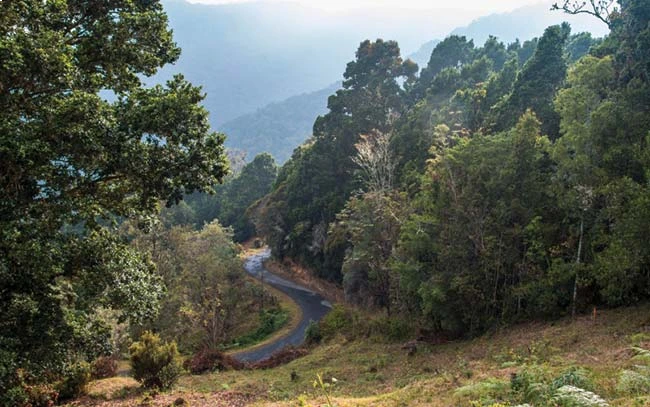
Key locations: San Gerardo de Dota, Trogon Lodge, Paraiso Quetzal
The misty oak forests of Costa Rica’s Central Highlands offer a completely different photographic experience from the lowlands, with cool temperatures and an entirely new suite of bird species. San Gerardo de Dota, a peaceful valley cut by the crystal-clear Savegre River, is world-renowned as the most reliable location to photograph the Resplendent Quetzal. Specialized lodges like Trogon and Paraiso Quetzal have developed intimate knowledge of quetzal nesting and feeding sites, allowing photographers unprecedented access to this mythical bird. The highlands are also a hummingbird paradise, with feeders attracting iridescent species like the Fiery-throated Hummingbird whose throat displays all colors of the rainbow when caught in perfect light. The fog that frequently rolls through these mountains creates atmospheric conditions for moody, evocative bird portraits, while the relatively open understory of oak forests makes finding and photographing subjects easier than in dense lowland rainforests. Morning light in these valleys produces magical conditions as golden rays filter through the mist.
Photographic highlights:
- Resplendent Quetzal
- Fiery-throated Hummingbird
- Long-tailed Silky-flycatcher
- Flame-colored Tanager
- Collared Redstart
- Golden-browed Chlorophonia
Northern Zone
Key locations: Arenal Observatory Lodge, Caño Negro Wildlife Refuge

Dominated by the iconic Arenal Volcano, Costa Rica’s Northern Zone blends rainforest with wetland habitats to create diverse photography opportunities. The Arenal Observatory Lodge sits on a ridge with commanding views of the volcano and maintains extensive gardens and feeding stations where birds from both Caribbean and Pacific slopes can be photographed. Its position at mid-elevation (around 2,500 feet) means photographers can capture species from multiple elevational zones. The forests here harbor secretive species like the Keel-billed Motmot and Lovely Cotinga that present exciting challenges for patient photographers. A short drive away, Caño Negro Wildlife Refuge offers boat-based photography along tranquil waterways where Boat-billed Herons, Sunbitterns, and various kingfishers pose against mirror-like water surfaces. This region’s diverse microhabitats allow photographers to build extensive portfolios without long travel days, making it ideal for photographers who prefer a single-base trip with minimal hotel changes.
Photographic highlights:
- Fasciated Tiger-Heron
- Sunbittern
- Keel-billed Motmot
- Black-crested Coquette
- White-fronted Nunbird
- Boat-billed Heron
Central Pacific
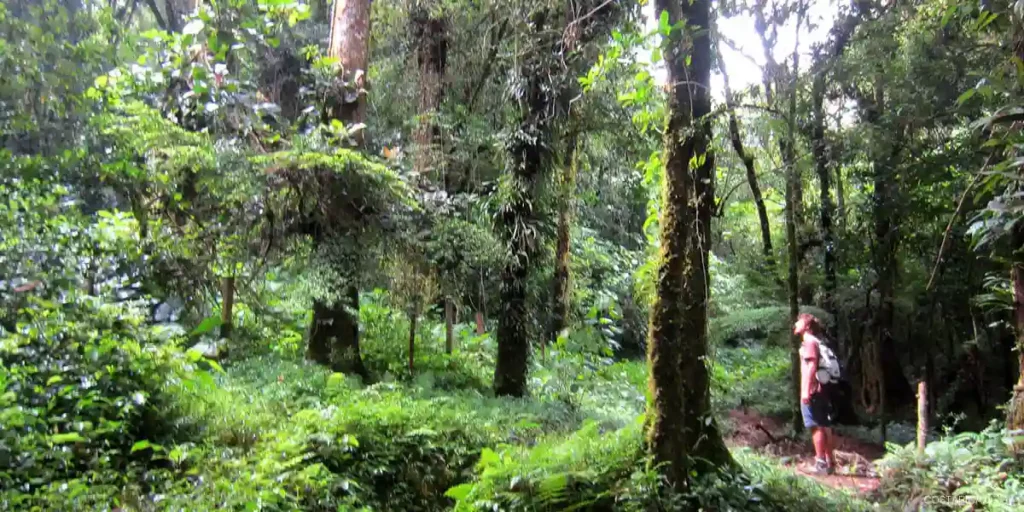
Key locations: Carara National Park, Tarcoles River
The Central Pacific region offers photographers the exciting contrast of dry tropical forest meeting mangrove ecosystems. Carara National Park serves as a biological corridor where northern and southern species intermingle, creating one of the country’s richest bird photography opportunities. The park’s relatively open forest makes it easier to spot and photograph species like trogons and motmots that might be challenging in denser forests. Dawn visits to the famous Tarcoles River bridge allow photographers to capture spectacular images of Scarlet Macaws flying between roosting and feeding sites, their brilliant colors illuminated by golden morning light. River cruises through the mangrove forests reveal intimate glimpses of boat-billed herons, tiger-herons, and the endemic Mangrove Hummingbird. The region’s dry season (December-April) brings additional photographic advantages with many trees losing their leaves, making birds more visible and creating cleaner backgrounds. This accessibility to both forest and wetland birds within short distances has made the Central Pacific a cornerstone of most serious bird photography expeditions in Costa Rica.
Photographic highlights:
- Scarlet Macaw
- Turquoise-browed Motmot
- Yellow-throated Toucan
- Mangrove Hummingbird
- Rufous-tailed Jacamar
- American Crocodile
Iconic Birds to Photograph in Costa Rica
Resplendent Quetzal
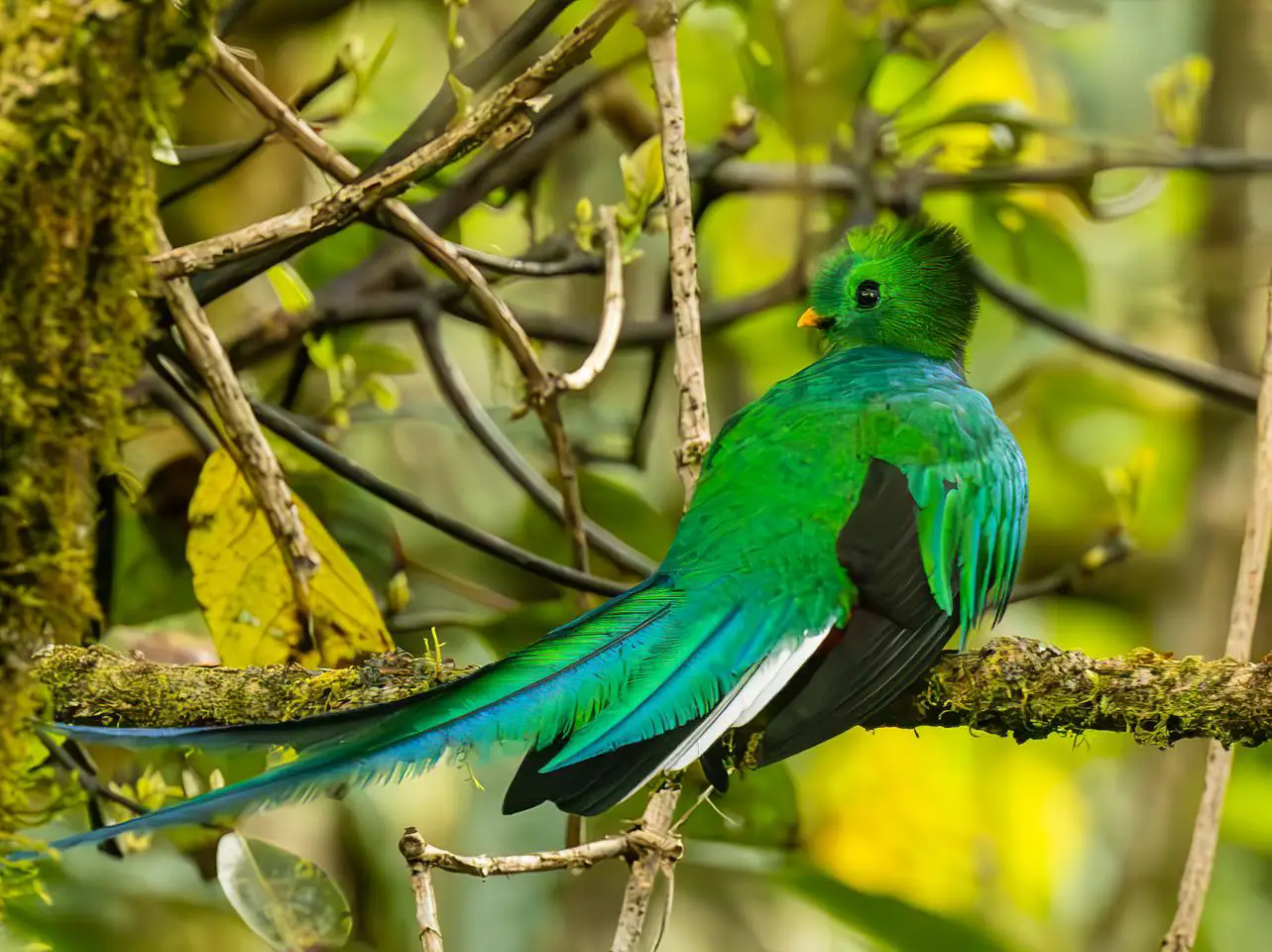
With shimmering green plumage and trailing tail feathers, the Resplendent Quetzal is one of the most sought-after birds in all of Latin America. This highland species is best photographed in the cloud forests of San Gerardo de Dota, where local guides track nesting and feeding activity to maximize your chances of a clean, well-lit shot.
Hummingbirds
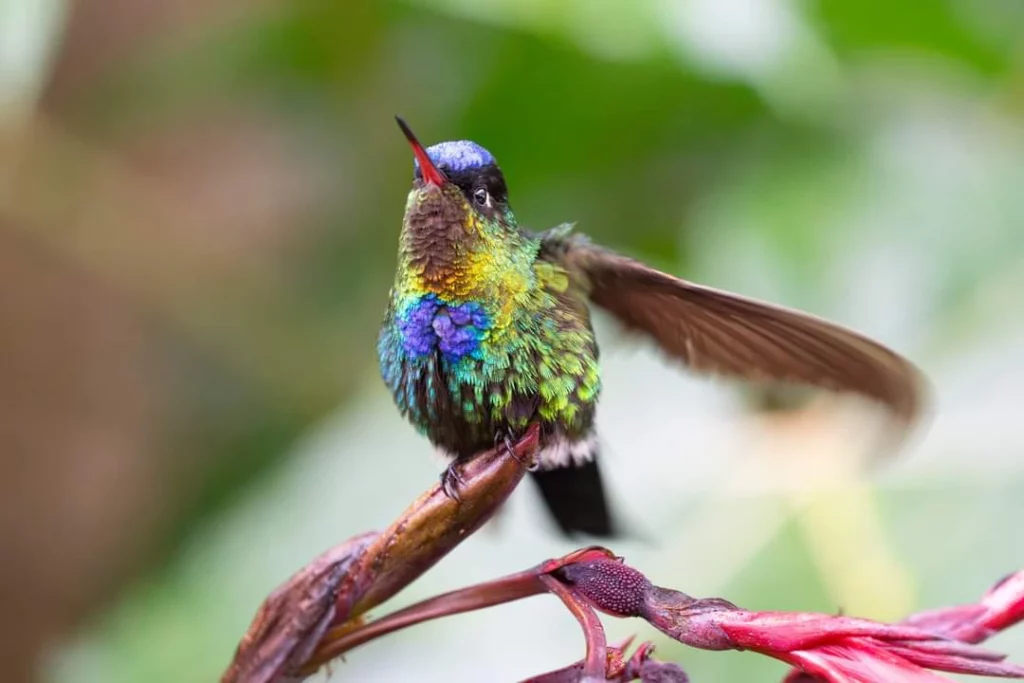
Costa Rica is home to more than 50 species of hummingbirds, each offering a chance to capture dazzling color and motion. From the tiny Snowcap to the striking Violet Sabrewing, these birds vary dramatically by region and elevation. Well-placed feeders and flowering gardens at select lodges make it possible to photograph them both in flight and at rest—often just feet away.
Toucans and Aracaris
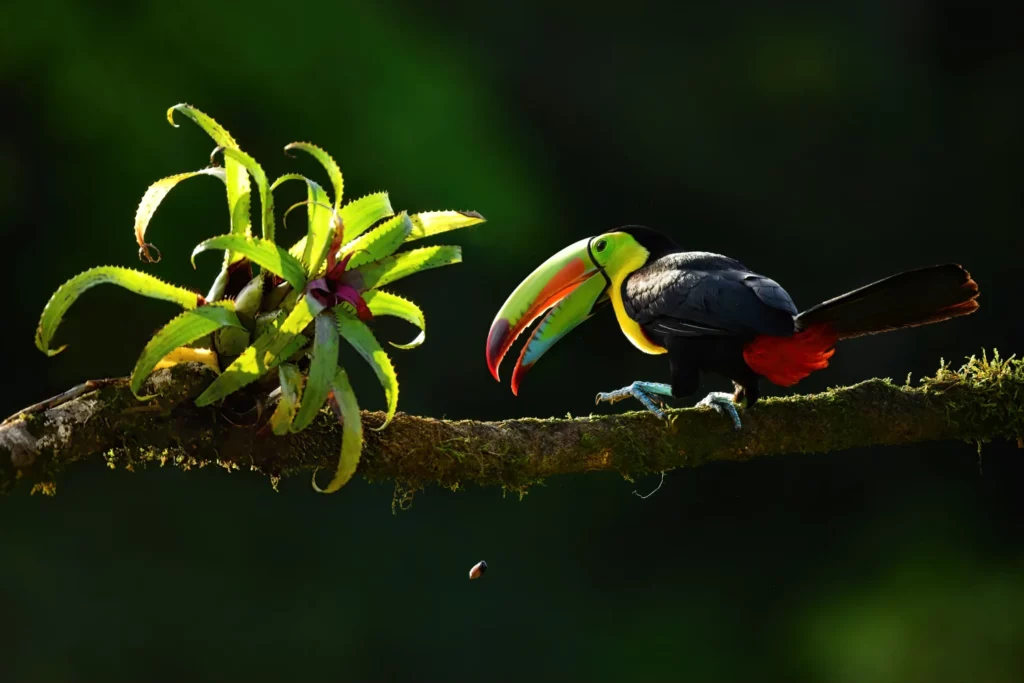
These iconic birds are bold, colorful, and unmistakable through the lens. With oversized bills and striking plumage, toucans and their smaller cousins, the aracaris, are frequent visitors to fruit feeders, especially in the Caribbean lowlands. Photographers often find them perched in good light, offering ideal compositions for both portraits and behavior shots.
Tanagers
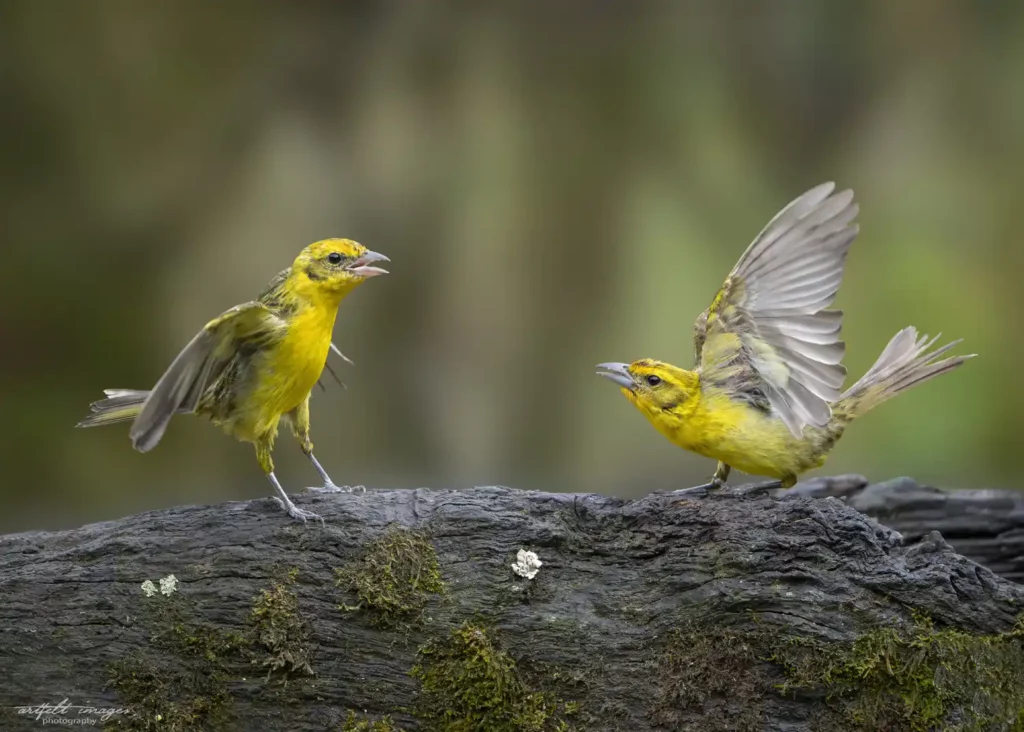
Tanagers are some of the most colorful birds in the tropics, and Costa Rica hosts an incredible variety. From the endemic Black-cheeked Ant-Tanager to the intricately marked Spangle-cheeked Tanager, these birds are regulars at fruiting trees and lodge feeders in the foothills and highlands. Their bold colors and cooperative behavior make them favorite subjects among visiting photographers.
King Vulture
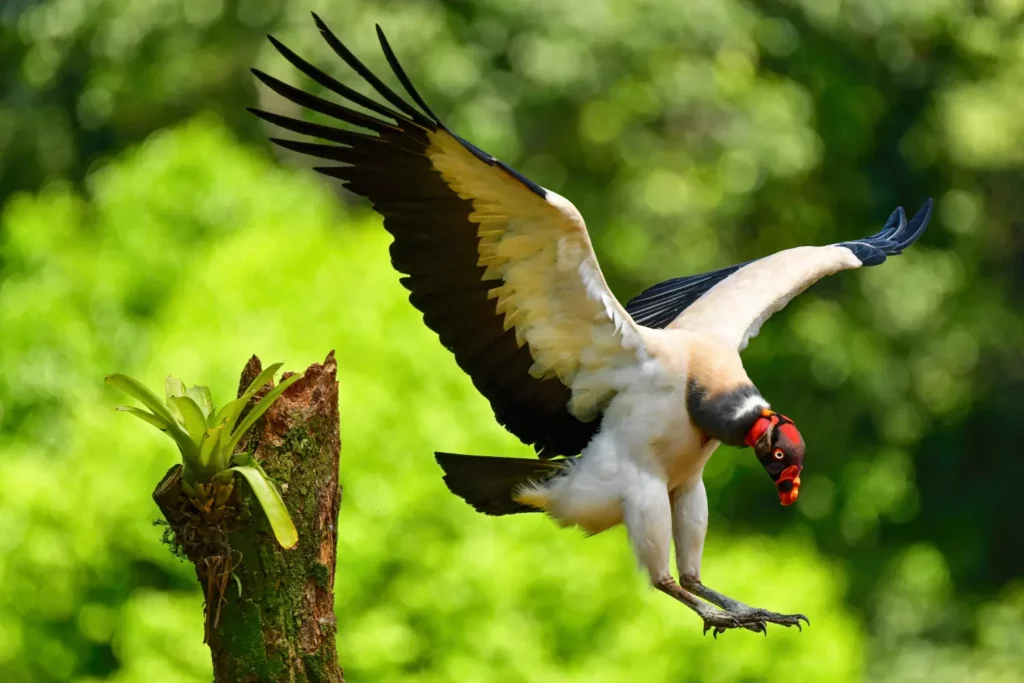
Strikingly patterned and surprisingly photogenic, the King Vulture is a true standout. These large birds are often shy, but specially designed photo blinds in the northern lowlands provide unique opportunities to photograph them up close. Whether perched, in flight, or interacting with other species.
Motmots
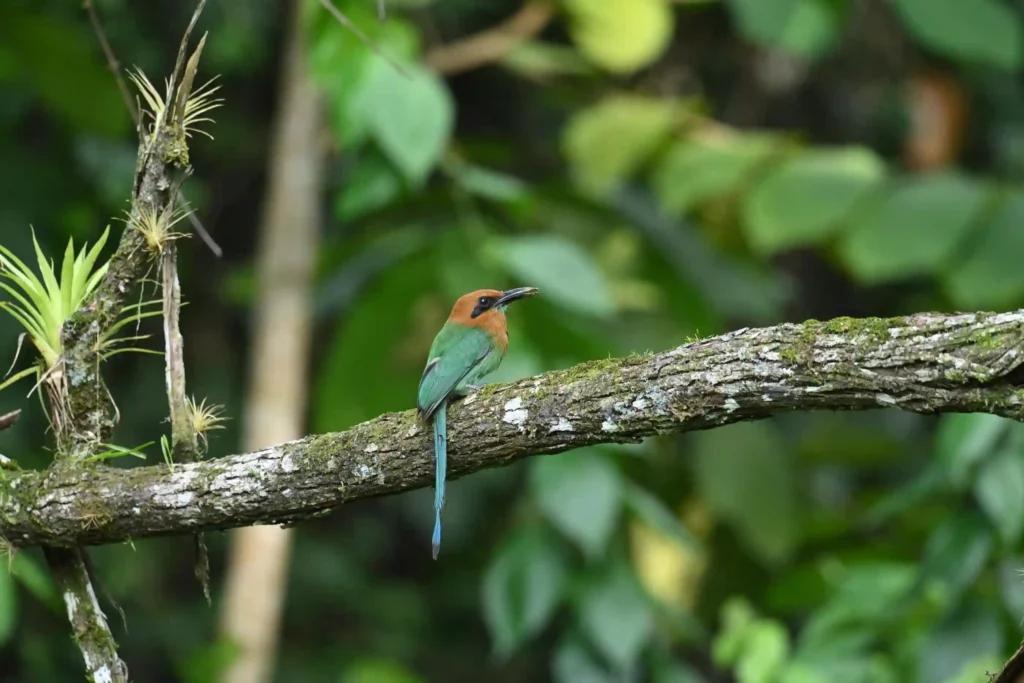
With long racquet-tipped tails and rich earthy colors, motmots are some of the most photogenic birds in Costa Rica. They often sit still for long periods in shaded forest edges or garden clearings, making them surprisingly cooperative subjects. Several species can be found across elevations, including the Tody Motmot, Rufous Motmot and the Lesson’s Motmot, with good chances for clean, eye-level portraits.
Manakins
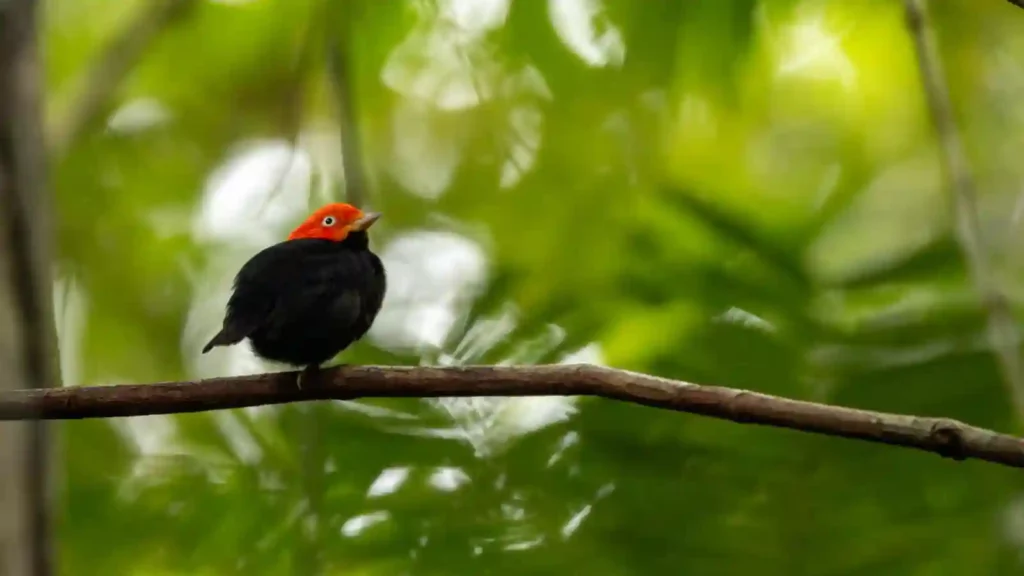
Small but striking, manakins are a favorite among photographers for their vibrant plumage and energetic courtship displays. While they can be tricky to spot at times, experienced guides know active leks where males perform their acrobatic jumps and wing snaps. The White-collared, Red-capped, and Orange-collared Manakins are among the more commonly photographed species, often in dim forest light that rewards patience and preparation.
Jabiru
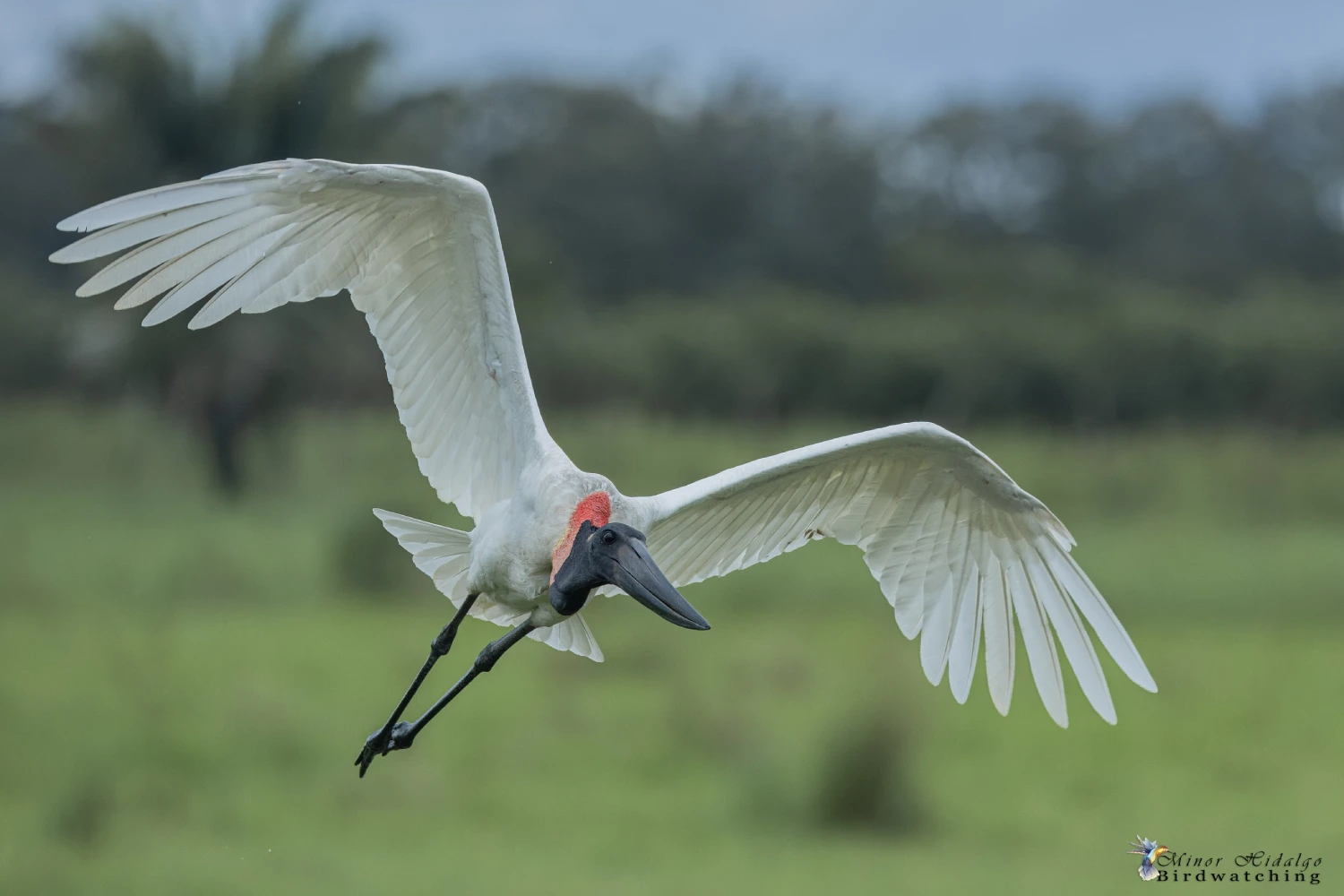
As the tallest flying bird in Central America, the Jabiru is a standout both in size and rarity. Found in the northern wetlands, this endangered stork is best photographed during the dry season when receding water levels concentrate fish and bring Jabirus into more accessible areas. With their stark black-and-white plumage and massive bills, they make powerful subjects, especially in flight or at nest sites.
Frequently Asked Questions
What is the average cost of a Costa Rica bird photography tour?
Pricing varies by tour type, duration, and level of customization. Private guided tours typically range between $1,000–$1,400 per day (for two people) depending on the itinerary. Small group tours are generally priced between $4,800–$6,800 per person for 7–12 day packages that include accommodations, meals, transportation, and expert guides. Independent tours can be assembled for as little as $2,500–$3,500 per person, per week.
What camera equipment should I bring?
We recommend a DSLR or mirrorless camera body paired with a telephoto lens—ideally 400–600mm—for bird photography. A macro lens is helpful for frogs, insects, and small forest details. A sturdy tripod or monopod, external flash (with extender), and plenty of memory cards and batteries are all essential. Don’t forget to bring rain protection for your gear, especially if you’re visiting during the rainy season.
Do I need to be an expert photographer to join these tours?
Not at all. Our tours welcome photographers of all experience levels, from beginners to seasoned professionals. Private tours allow for tailored instruction and pacing, while group tours often foster shared learning and collaboration among participants. Let us know your experience level when booking so we can match you with the right tour and guide.
What’s the best time to photograph the Resplendent Quetzal?
The peak season for photographing Resplendent Quetzals is from February to April, during their nesting period in the highland cloud forests. During this time, males are more visible and active, providing better chances to capture perched and in-flight shots near nesting or feeding sites.
How physically demanding are these photography tours?
Most bird photography in Costa Rica is accessible, with many productive spots located near lodges, roads, or feeders. Tours can be adapted to match your fitness level. Private tours offer the greatest flexibility, while small group tours are typically rated as moderate to intermediate, with optional hikes available for those seeking more physical activity.
Can I customize a tour to focus on specific bird species?
Yes, especially with privately guided tours, which can be fully customized around your target species, habitats, or photographic goals. Even small group tours can often accommodate specific interests if communicated in advance. With over 900 species in Costa Rica, we can help you build an itinerary focused on hummingbirds, raptors, endemics, or regional specialties.
How can I protect my camera gear in Costa Rica’s humid conditions?
Use waterproof or weather-sealed bags to store your gear, and add silica gel packets to absorb moisture. Avoid rapid temperature changes (e.g., from air conditioning to warm air) to reduce condensation. Bring lens and rain covers for the field, and a dry towel for daily maintenance. Never store wet gear in a sealed case or bag.
Will there be opportunities for multi-flash hummingbird photography?
Multi-flash hummingbird setups are available in a few specific locations; however, we do not encourage this method. Flash photography, especially multi-flash, can be harmful to hummingbirds when overused or improperly managed. For that reason, we strongly discourage its use and promote ethical, natural-light photography whenever possible. Some locations still offer limited multi-flash setups, but guests are typically required to bring and manage their own equipment.
Ready to Book Your Costa Rica Bird Photography Adventure?
Get in touch today and let us help you choose the tour style that best fits your photography goals, travel dates, and budget. Whether you’re looking for full-time private guidance, independent flexibility, or the camaraderie of a small group, our bird photography specialists will work with you to design a trip that delivers unforgettable experiences and incredible images.
All tours include expert guidance, private transportation, accommodations, and some meals unless otherwise specified. Camera equipment not included.
